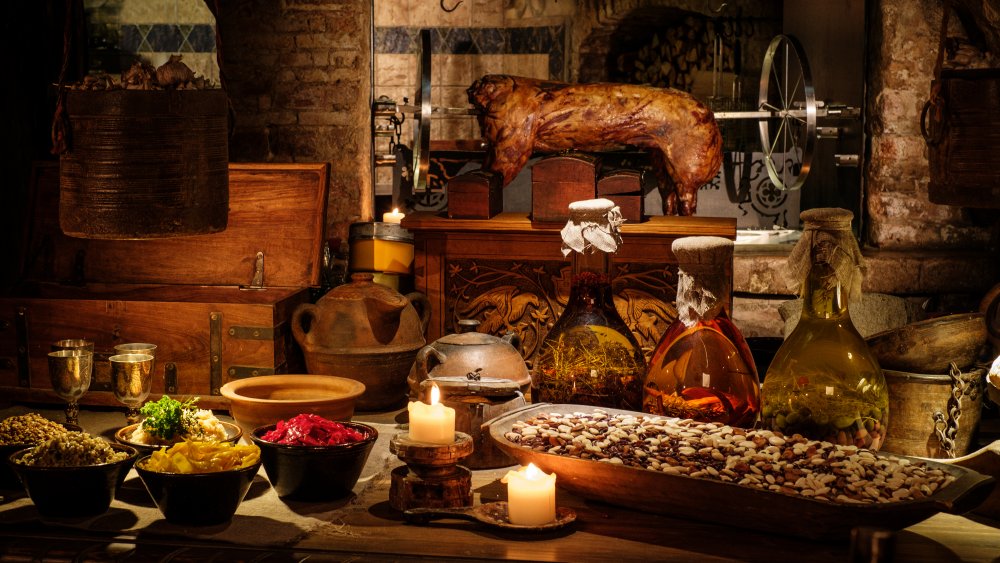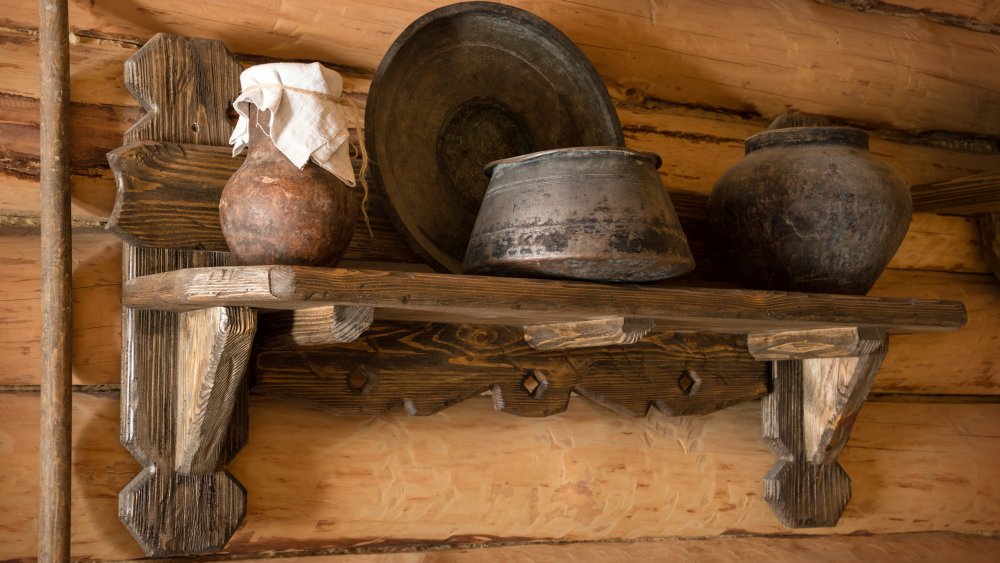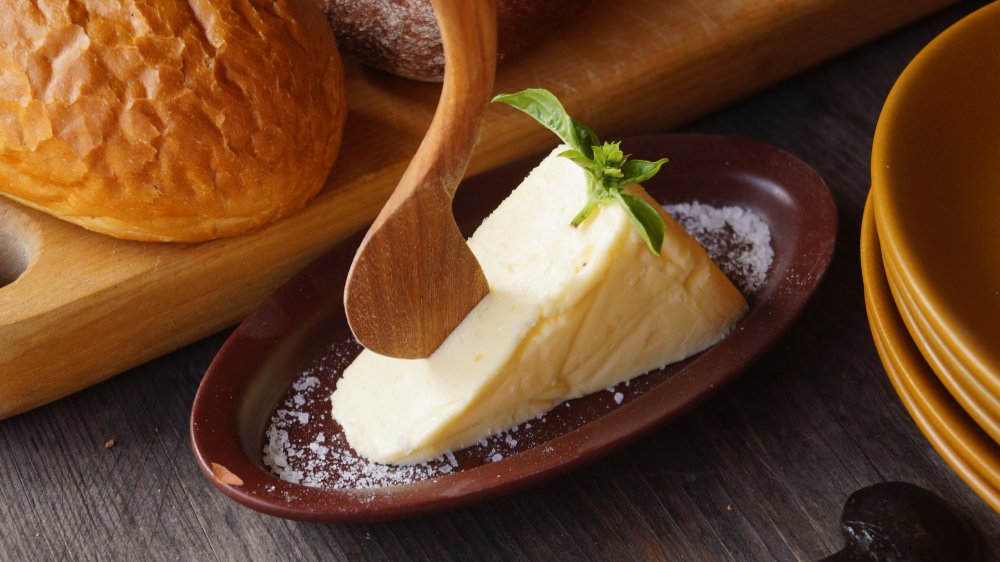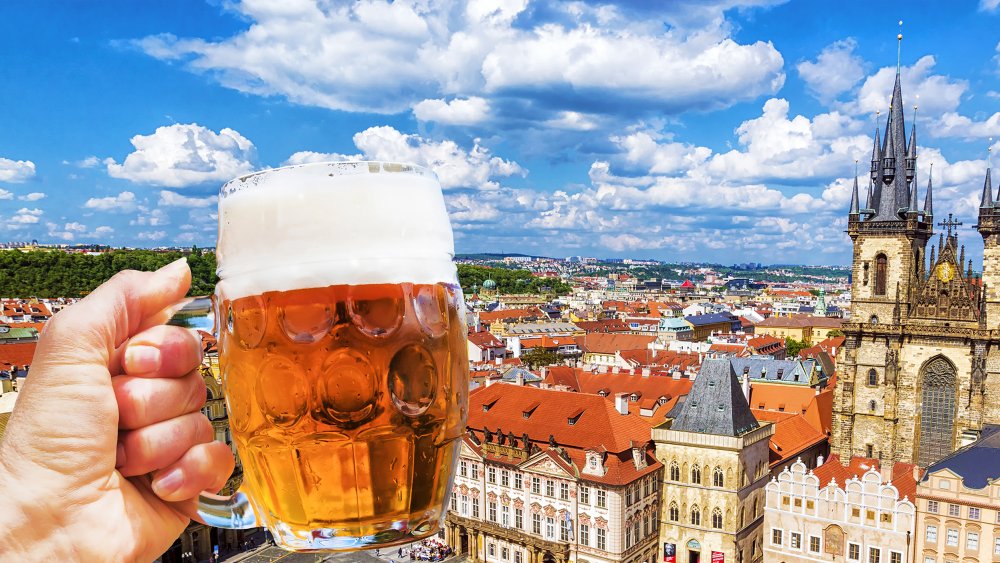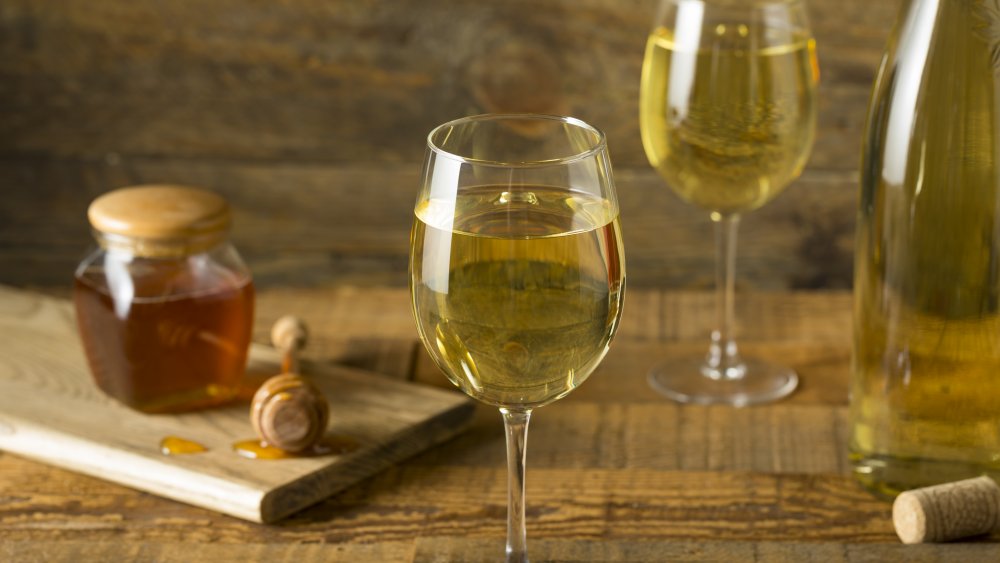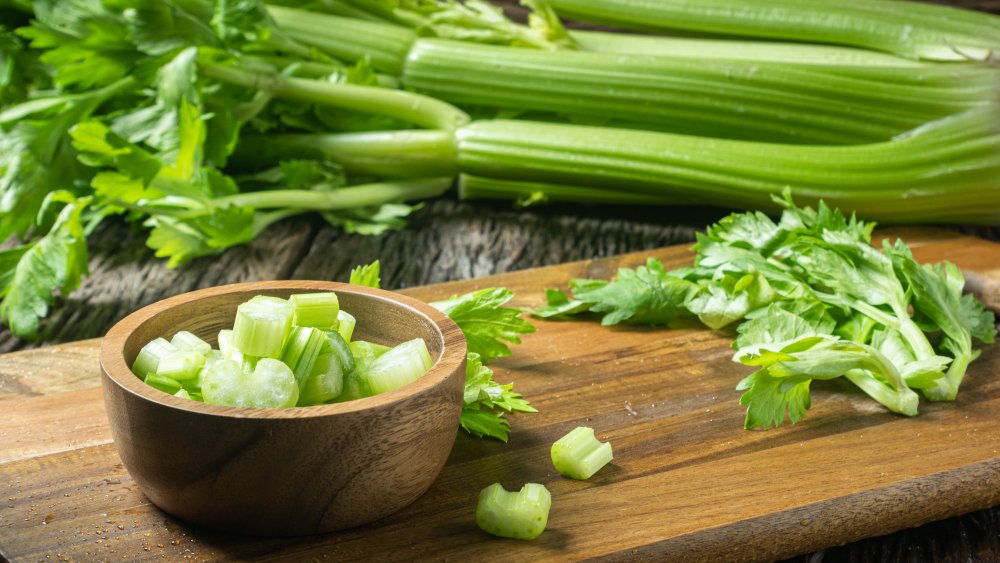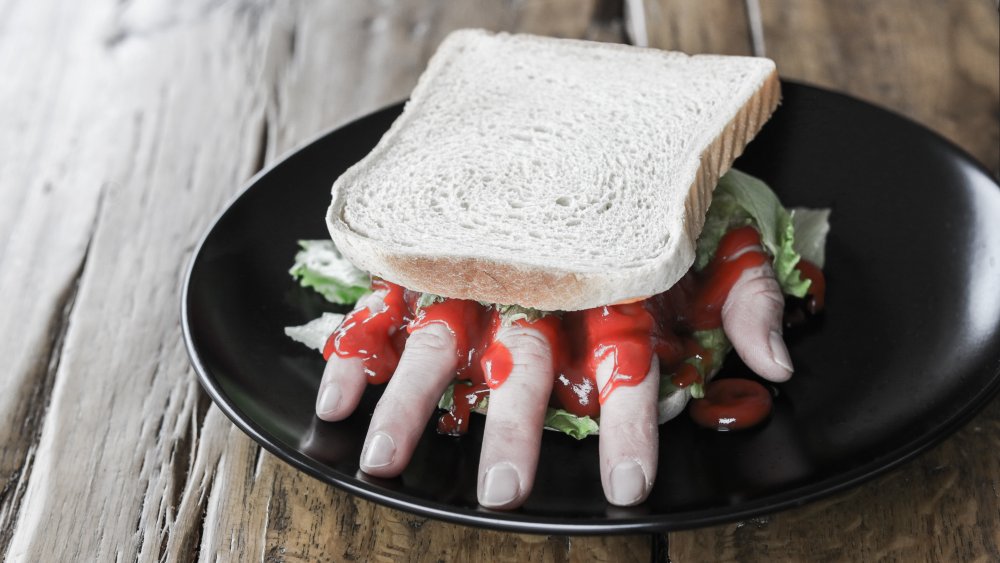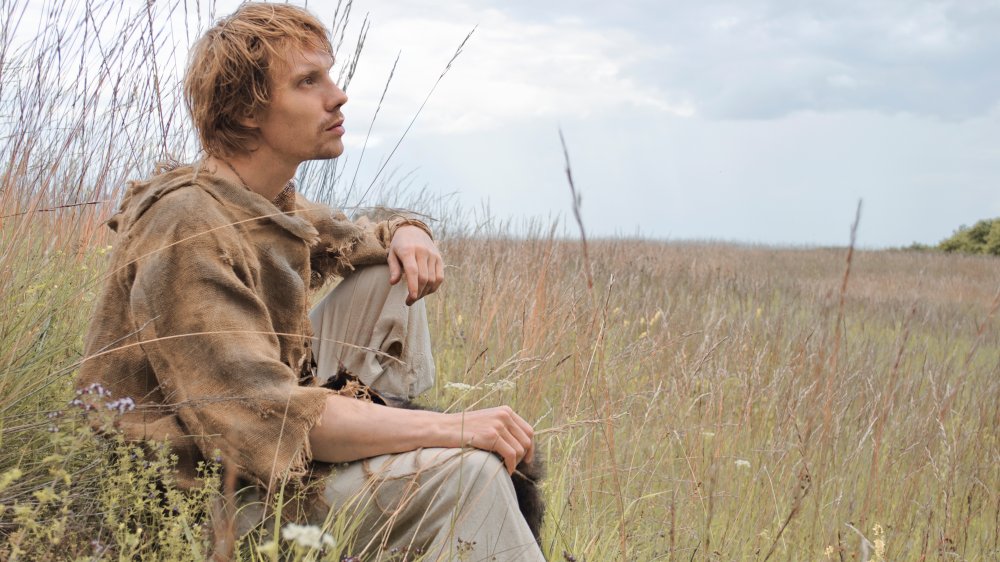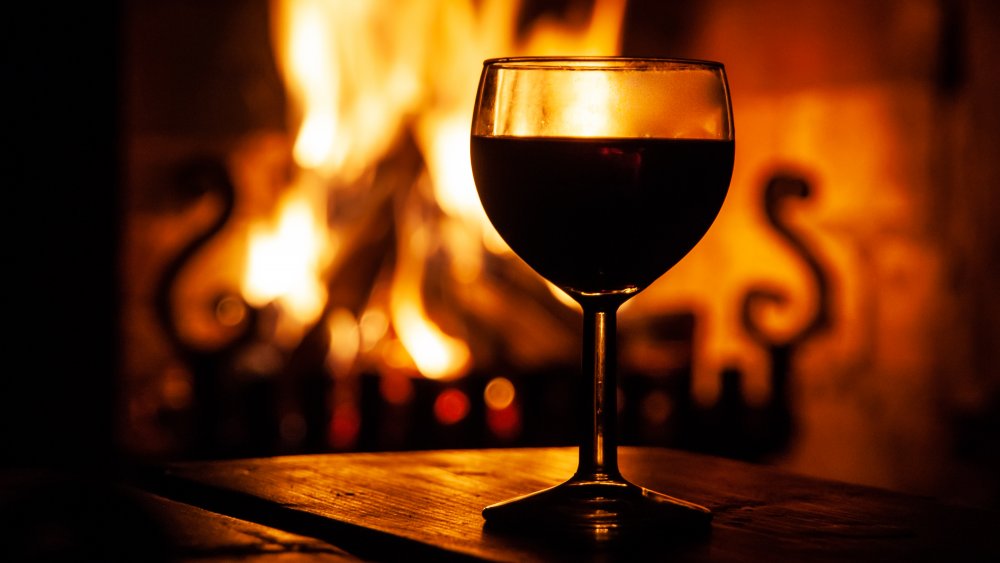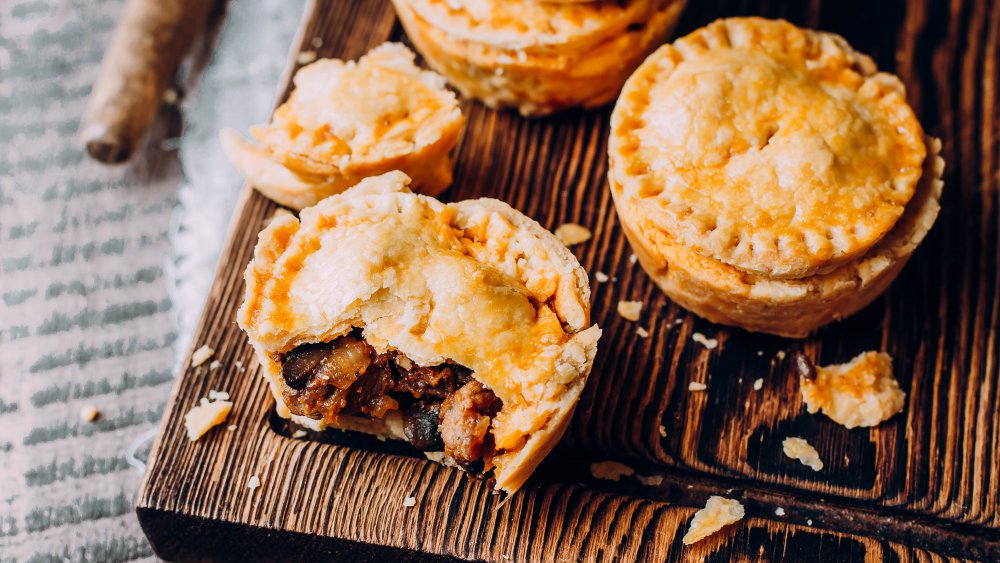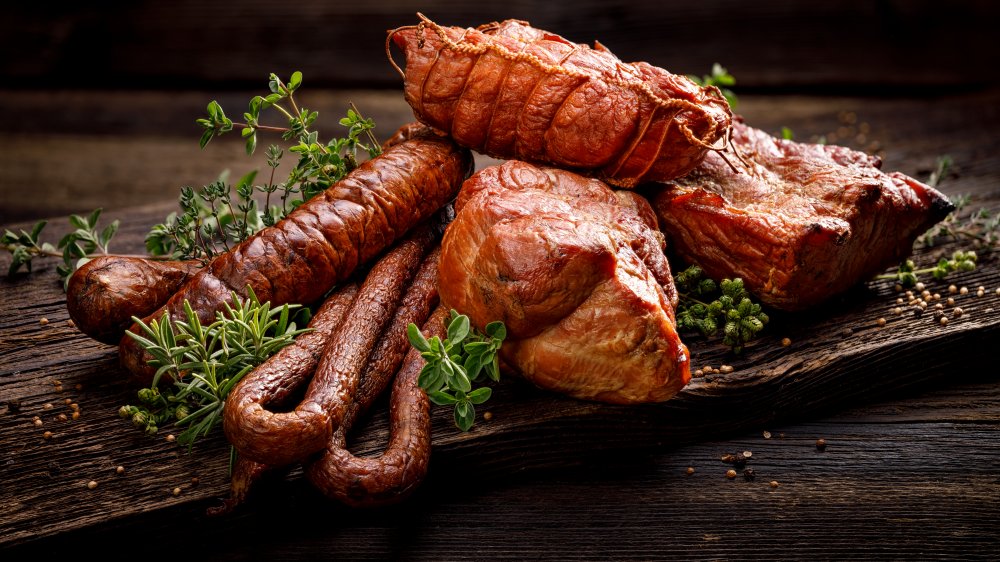What Medieval Peasants Really Ate In A Day
The Middle Ages — the time between the fall of Rome in 476 and the beginning of the Renaissance (via History) — gets a bit of a bad reputation as a time when not much happened, and when life was generally miserable for a lot of people.
The latter part of that was pretty true, at least, but there was a lot going on in the medieval period. There was the Black Death, the rise of the Catholic Church, the rise of Islam, the Crusades ... it was a busy time. And through it all were the peasants, the poor people living at the bottom of the social order, doing all the heavy lifting and quite a bit of the miserable dying.
Today, at least, we have things to look forward to in the form of tasty treats. A long day doing the modern equivalent of breaking rocks and laboring in the fields in the medieval period is at least made better by a DQ Blizzard on the way home or a bag of McDonald's fries. And that makes you wonder: What did they actually eat in the Middle Ages? Surprisingly, it wasn't just mud stew.
How do we know?: a study in pottery
Here's a question: how do we know what people ate? It's not like there was a medieval version of Instagram where people could upload their food photos, and when it came to literacy, they weren't so great in that department, either. Spartacus Educational estimates that in the late part of the Middle Ages, only around 10 percent of men and one percent of women were literate. Even then, they weren't writing about their breakfast, lunch, and dinner, so researchers have had to get creative.
That involves studies like the one done in 2019 and published in the Journal of Archaeological Science. They were able to take samples of medieval pottery from West Cotton, Northamptonshire and analyze the residue left inside. The molecular analysis allowed them to put together a picture of what was cooked.
What did they find? Staples were meat (mostly sheep and cattle) and cabbage stews, cooked in the pots over an open hearth. There were also a lot of dairy products, which the study notes were affectionately referred to as "white meats of the poor."
English Heritage followed a reenactor as they made traditional medieval stew, and it would look pretty familiar to 21st-century cooks. Meat — often hare or bacon — was first browned over an open fire, then transferred to a large dish. Carrots, onions, and other available veg were added, and so was cider. It was sometimes seasoned with whatever herbs were foraged, then barley was added, too — a staple grain. That was then left to cook over an open fire or a hearth. That doesn't sound so awful, does it?
Everybody loves butter
Butter has been around for a long time — so long that the idea that we're eating one of the same staple foods our ancestors ate 4,000 years ago is a little mind-blowing. Take Ireland, a country still known for its butter. Before refrigeration, the ancient Irish had a massive dairy industry and stored butter in containers buried in bogs. According to The Journal, samples have been found dating back to 1700 BC, and it can still be edible!
Fast forward to the Middle Ages, and Trinity College Dublin says that butter was still extremely important to all classes. They say that while it was a luxury for some, it was a necessity for others as it helped stave off malnutrition. That was especially true for the penitents, those who kept a strict bread-and-water diet to demonstrate their faith. Malnutrition and death were widespread until church officials started telling of a vision of an angel who had visited a saint praying for guidance. The angel had told them to "Mix some meal with their butter to make gruel, so that the penitents should not perish [...]"
Bottom line? The nobility loved it because of the taste, and the peasants loved it because it was a cheap, widely available source of nutrition (via Butter Journal).
The myth of beer-drinking in the Middle Ages
It's one of those things that we hear a lot about the medieval era: people tended to drink a lot of beer, because it was safer than drinking the perpetually dirty water. That's true, right? Not at all, says food historian Jim Chevallier on his blog, Les Leftovers. He did a deep dive (ahem, no pun intended) into the claim, and found some fascinating things.
For starters, there's a ton of references in medieval texts to people drinking water. Those range from one writer's description of water in Italy ("clear, without odor, and cold") to excerpts like one from Gregory of Tours, who wrote in the 6th century of a man arriving in his village and asking for some water. Gregory also writes about hermits drinking from streams and says that water was far from feared — it was linked with holy figures and miraculous cures. And some texts from the 14th century even recommended drinking only water.
Some people — like the Gauls — preferred to drink water that had been run through a beehive and slightly sweetened. The medical authorities of the medieval era did issue some warnings about water, but they were along the lines of, "Don't drink the yucky-looking stuff." If it was cold, clear, didn't have a funky smell, then it was absolutely fine. In fact, it was recommended for those who were suffering from an imbalance of their humors. Simply put? If one was hot, drink some cold water.
Beverage, anyone?
Every grocery store has an aisle or two filled with beverage options, and that might give modern-day people a bit of a superiority complex. But go back to the medieval era, and you'll find that while people didn't have the sort of variety of drinks we have today, they still weren't too bad off.
Food historian Jim Chevallier says (via Les Leftovers) that for starters, it wasn't just beer, water, and wine. Mead — an alcoholic beverage made from honey — was popular in some areas, and there's also the rare mention of fruit juices. Apples were commonly used in ciders, sometimes alcoholic and sometimes not, sometimes flavored with various types of berries.
And here's where it gets a little weird. Medieval Franks were also drinking vermouth, and the art of making wine from wormwood (a major ingredient in absinthe) had been passed down from Rome.
Tonics were also common, especially among monks. Common ingredients — things like rhubarb, fennel, celery seed, and juniper — would have been readily available to be infused into water. There was also the occasional mention of hot drinks, which were occasionally medicinal and included things like warm goat's milk and teas made from barley, chamomile, and lavender.
The healing powers of a good meal
In the 8th century, Irish law was outlined in tracts called the Bretha Crólige, and part of that law involved the distribution of food. According to Trinity College Dublin, part of the tract specified that if a wife was sick, she was entitled to half of her husband's food while on "sick-maintenance." (A concubine, though, could only claim a third to a quarter, so there's a good reason to get married.)
While research from The National University of Ireland: Maynooth found that while texts definitely tended to divide the right to food by rank and social standing, sick people of any and all rank were allotted a large portion of celery. That makes a lot of sense: it's an inoffensive food, and it has a high water content that could be life-saving if you're getting dehydrated. Texts also suggest that many places planted herb gardens solely to grow plants and herbs for the sick, although history is sadly incomplete on just what those herbs were.
Another medieval text — Prose Rule of the Celi De — contains instructions for menstruating women to be given something extra: a mix of heated milk, oatmeal, and herbs. And by the 9th century, texts were also documenting the phenomenon of pregnant women craving certain foods.
Tastes like pork?
Life in the medieval era was difficult, and sometimes, tough times called for drastic measures. Like cannibalism.
There's a lot about medieval cannibalism we don't know, but according to the Smithsonian, there are a ton of reports scattered through old texts referring to cannibalism in times of extreme hardship, like famine. For instance, there's one report that English markets in the 11th century had human flesh for sale. Did they? It's hard to tell, but we do know that cannibalism during the Crusades (and the siege and capture of Ma'arra, in Syria) was reported in multiple independent sources, giving that one some credence.
Even at the time, people weren't thrilled with the idea that their side — no matter which side was "theirs" — was partaking in human flesh. Still, medieval history is dotted with stories of desperation. In 1594, The Guardian says those under siege in Paris resorted to making bread from the bones of their dead, and during instances of widespread famine (like the period between 1315 and 1322), Medievalists says there were numerous reports of cannibalism. It's even possible those reports gave birth to the tale of Hansel and Gretel, the unsuspecting children who seemed destined for the dinner table.
The lives of medieval peasants weren't all the same
Quick, imagine a medieval peasant. There's probably a small village or some farms involved, right? That's true, but that's only part of the story. According to Radford University anthropology professor Cassady Yoder (via Medievalists), there were a ton of medieval peasants living in large cities, too. She also found that where you lived made a huge difference when it came to what you were eating.
Yoder looked at the diets of medieval peasants from three places: Ribe, Denmark's largest medieval city, the mid-sized metropolis of Viborg, and the small rural community around a Cistercian monastery. Her findings (which were compiled by analyzing bone samples) were surprising.
In a nutshell, the people with the most varied diet were those who lived near the rural monastery. They didn't have much in the way of meat, but they did eat a variety of cereal grains and vegetables. On the other hand, the peasants of Ribe and Viborg had a more narrow range of foods, but their diets were much higher in meat and protein. They were eating a lot of fish, pigs, and cows.
Medieval peasants ate deer ... illegally
Deer farming in medieval England was a huge deal. According to The Agricultural History Review, deer parks were sustainably managed sections of wilderness that supported massive herds of not only deer but other wildlife. These vast parks were managed by the upper class, who were technically the only ones who could hunt there. And they did — deer were an important source of meat, and it wasn't just a matter of hunting the deer that happened to be on your land. It was an entire industry, with a lot in common with sheep or cattle farming. That said, venison was reserved for that same upper class and their guests. The myths and legends of Robin Hood get one thing right: deer was not for the peasants.
But that doesn't mean the rules actually stopped people from poaching. Evidence of poaching has definitely been found, like the cesspit uncovered in northern England in 2008. According to Medievalists, excavation of the pit uncovered more than a hundred bones, all belonging to fallow deer (like the one pictured) and dating back to the 15th century. Given the size, they were mostly young animals — which meant they were even killed outside of the accepted winter hunting season. Given the lack of meat bones and the presence of more bones like the legs, archaeologists came to the conclusion that it was the work of peasants, poaching, taking the meatiest bits, and burying the evidence in hopes of avoiding the law.
Lent was hardcore for medieval peasants
History says that the Middle Ages was characterized by a rise in the power of the Catholic Church, and that meant more people were observing Lent and all its restrictions. For medieval peasants, those restrictions were hardcore. According to Alimentarium, the faithful were forbidden from eating meat and other animal-based products during the 40 days of Lent — which also meant no milk, cheese, eggs, cream, or butter.
Wine and liquor were also forbidden, but let's go back to the meaty restrictions. That takes a lot of core foodstuffs off the menu for a long time, and Atlas Obscura says there was a bit of a work-around. Fish were, of course, exempt from the rule and could be eaten, so logically, certain animals were just re-classified as fish. Puffins, like the one pictured, are sea birds who spend most of their time by water, so, therefore, they're fish. Clearly. Beavertails were scaly like fish, so they were approved, and also unborn bunny fetuses were allowed. The most creative has to be the barnacle goose, so named because of an old belief that they hatched from loose barnacles found on driftwood. (They migrated, and no one knew where they went to reproduce, so it wasn't as far-fetched as it sounds.) And since they hatched from water-bound barnacles? Fish!
Interestingly, there were other substitutions made, too: almonds were incredibly popular, and the ultra-trendy idea of almond-based products actually has medieval roots.
Christmas was a time for treats
It wasn't all doom and gloom for people in the medieval era, and there's one bright spot. They didn't just celebrate Christmas, says The Conversation, they celebrated all 12 days between Christmas and Epiphany. Lucky ducks.
During that time, there was usually at least one big Christmas feast, even for the peasants. While they weren't dining on the meat and sweet treats the upper class had, it was still a time to enjoy things that were otherwise in short supply through the winter months. Those were typically things like salted fish, dried apples and vegetables like peas and beans, and meats like bacon and sausage.
Depending on where you lived (and how nice your lord was), this was also a time that peasants might have gotten a taste of the high life. According to Ancient History, leftovers from the manor hall feast were often distributed among the poor, giving them a taste of exotic dishes like peacock, swan, and desserts made with otherwise unattainable sugar.
The dangers of medieval fast food
Fast food seems like a distinctly modern idea, but the concept goes back to the medieval era. Unfortunately, rules about health and safety didn't go back that far.
The peasants of medieval urban cities had it rough, says Penn State University. Many were living in super crowded conditions and didn't have access to what they needed to cook their own food, so they relied on what was essentially medieval fast food. What does that mean? There was one area on the Thames, for example, that was essentially a group of shops that were open 24/7, and sold a variety of foodstuffs at all different price points.
The urban peasant could expect to find things like meat pies and pasties, bread, pies, pancakes, hotcakes, pies, wafers, and more pies. And more pies. Why were pies so popular? Because they contained everything in a handy pocket, and they could be eaten on the run.
Sounds delicious, but there was a major problem. Unscrupulous vendors quickly discovered that they could hide all kinds of things in pies and no one would know the difference until it was too late. They paid, they left, and they got food poisoning. Laws were put in place against the selling of diseased or rotten meat, reheating pies, and against claiming meat was something that it wasn't. And that gave rise to a medieval saying: "God sends the meat, but the devil sends the cooks."
The myth of medieval spices
Here's a popular belief: during the medieval era, spices were often used to mask the smell and taste of rotten meat. Makes sense, right? But it's not true.
Culinary Lore says there's one big flaw in that tale. During the Middle Ages, spices — like ginger, cinnamon, cloves, cardamom, and nutmeg — were known, but they were also imported from the Far East at a massive cost. That means only the very rich could afford them, and not only were the wealthy not eating rotten meat, but they wouldn't have wasted spices on them if they had.
Also, people were quite familiar with the idea that eating bad meat could make you sick, and it wasn't something they voluntarily did. They may not have known about things like microbes and bacterial contamination, but they knew it was bad. Instead of using spices, Middle Ages peasants made sure their meat didn't go bad in the first place, by salting, drying, or smoking it ... which doesn't sound half bad.
